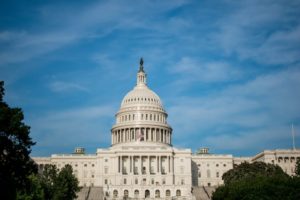Financial aid is a blanket term used to communicate the different funding sources for a college student’s education. It is rare for a student to receive a “full ride” to college. Universities don’t just haphazardly dole out financial aid packages that cover all possible expenses. Today, it is more likely that students will secure financial aid that covers a percentage of their needs. The rest is funded through alternative resources.

Financial aid packages can be comprised of grants, loans, and scholarships. Packages will often include government education loans, such as Perkins Loans, Stafford Loans, or PLUS Loans. Many students end up paying for college by fusing many types of financial aid. Here is a 30,000-foot explanation of scholarships, grants, and loans and how they are used.
What Are the Basics of Financial Aid?
- Scholarships
- Grants
- Loans
Scholarships
Scholarships are financial gifts granted by an institution, organization, or charity that help cover some college costs. Need-based scholarships are bequeathed to students with the most financial need. Merit-based scholarships are awarded to those who have shown outstanding academic or social achievement. Most scholarships are competitive and require that students fill out applications. These include a description of the student’s past and current circumstances. Other elements include an essay justifying why they deserve the money and indicating their future career plans.
Scholarship money is “free.” It does not need to be paid back to the donor. However, many scholarships include terms that require students to maintain specific grade point averages or follow courses of study. Athletic scholarships are common in higher education. They are dependent on a student’s participation in a collegiate sports program. College candidates use many Scholarship Search Engines to find available scholarships.
Work/Study and Graduate Assistantships
Financial aid recipients can seek positions in “Work Study” programs. These arrangements allow students to work on their college campus to help cover some of their tuition and living costs. Graduate assistants undertake various duties, including teaching, maintaining computer labs, working as assistants in university administrative offices, or supporting faculty research. Many graduate assistantships begin during the student’s second year.

Grants
The two main types of grants are private and federal.
The Pell Grant is the standard for federal student aid. All other federal and non-federal sources of support can be added to this grant. Pell Grants are awarded to bachelor’s students pursuing their first undergraduate degree. They are awarded the grant solely based on their financial need. Eligibility for the Pell Grant is based on calculations that consider several variables. The factors include parent and child income and assets, tuition and fee cost, and projected family contributions. Candidates can apply for Pell Grants by completing the FAFSA form or through their college’s financial aid office, which will assist them in completing FAFSA and assessing their qualifications for other sources of financial aid.
Various institutions, charities, and groups give private grants. There is often some connection between the organization granting the money and the student applying for it. When planning to pay for a college education, it makes sense to explore all the possible grants that local churches, civic groups, or other community organizations might offer. There are grants allocated for specific areas of study. Incoming students who know what they will be studying in can explore grant possibilities in that field of study.
All grants are competitive. They include an intensive application process. Applicants do well to plan ahead as deadlines could be earlier than expected. The best thing about grants is that the funds do not have to be repaid.
Loans
There are various loans available to college students. Parents or students can apply for federal loans. These loans are formally known as Federal Perkins Loans, PLUS Loans, and Stafford Loans. A Federal Consolidation Loan program allows candidates to consolidate their loans into one payment after graduation. Federal loans can be consolidated at just one time. Federal student loans can be obtained directly from a business school’s financial aid office.
Stafford Loan

The Stafford Loan stands as the most popular federal loan. It can be subsidized or unsubsidized. The federal government is responsible for the interest payments on subsidized Stafford Loans while students who qualify based on need are in school. This means they pay no interest on their loans until they graduate or leave school.
Students with Unsubsidized Stafford Loans begin making interest payments right away. They do not have to pay back any principal while taking classes. Still, unsubsidized loans require them to either make interest payments during school or get the interest deferred (added to their principal), thus increasing the loan balance. This type of loan features a low, fixed interest rate. Repayment begins six months after graduation.
Federal Perkins Loans
Perkins Loan Program loans are low-interest, needs-based loans. The university determines the loan amount and is influenced by the expected family contribution. Students must also apply for a Pell Grant to qualify for this loan. Repayment is not scheduled until a student graduates or steps below half-time enrollment status in school.
PLUS Loans
The Graduate PLUS Loan is designed to pick up where the Stafford and Perkins Loans leave off. Graduate and professional students eligible for the loan can borrow up to attendance costs minus other financial aid they have received.
A total deferment is an option on some types of student loans. Students can decide not to pay any of the principal loan amount and interest while enrolled in college. This defers loan repayment until after graduation. The loan amount earns interest even though they aren’t making payments. That interest gets applied to the principal loan amount upon graduation. Once the students complete their degrees, the loan amount is more substantial.
Private loans are available at many of the nation’s banks and financial institutions. This loan is often used to span the gap between the money a student is awarded from scholarships, federal loans, and grants and what they need to cover expenses. It is common for banks to make unsecured installment loans to parents. They also make funds available to homeowners through Home Equity Loans and Lines of Credit. Interested applicants can talk to financial advisors at their bank or credit union for more information about these programs.
Employer-sponsored Programs

Corporate America invests millions of dollars annually to support MBA students’ educational efforts. Business professionals interested in an online MBA can begin by visiting their employer’s website to see if they are eligible for any of their tuition reimbursement or scholarship programs. Recent graduates should look at companies that offer comprehensive educational benefits for employees wanting to continue their education.
Current college students entering the workforce and existing employees looking to return to school should look for internships and full-time employment with organizations that offer tuition reimbursement plans. They are an excellent way to fund online MBAs. Many of these programs require students to work full-time or have several years of experience after graduating to receive financial aid. MBA students may also have to maintain a GPA while pursuing their degrees to get reimbursed.
What Can I Expect to Pay for an Online MBA?
Prices are all over the place for online MBA programs. For example, the Warrington Business School at the University of Florida offers an award-winning program for less than $60,000. A program from Carnegie Mellon costs over twice as much at $140,000. Indiana’s Kelley School of Business is an excellent option at less than $80,000, while UNC’s Kenan-Flagler costs over $100,000. That puts two of U.S. News and World Reports’ top three programs for 2022 among the most expensive.
Two business schools that offer attractively priced online MBA programs are Wisconsin MBA Consortium and Arizona’s Eller College of Management. Wisconsin offers its degree at around $30,000, while the online MBA at Boston University comes in at less than $30,000. These stellar programs are among the best in the nation. Price is not always indicative of quality when considering online MBAs.

When researching programs, future online MBA students need to consider the career progress of salary achieved and salary increase after graduating. Other factors to consider, include the strength of program leadership’s teaching and research and the diversity and quality of the cohort.
Cheaper tuition rates may increase the return on investment of the program, although it is not definite. ROI is calculated by taking the median salary reported by graduates and deducting the tuition cost. The number will increase over time.
What is the History of Financial Aid?
In the mid-60s, President Lyndon Johnson signed the Higher Education Act of 1965 into law. It established the U.S. federal government as the primary financial aid provider. Title IV of the Act founded the Educational Opportunity Grant Program (EOG), which designated funds directly to universities. While some things have come to pass in the nation’s higher education since 1965, what has yet to happen is the development of a unified and consistent financial aid policy.
Since the Act’s passing, federal aid to support college students has morphed into a complex myriad of options and programs. These components include loans to students and parents, work-study, tax credits, grants, and other state programs. Nearly 85% of first-time, full-time college students in 2012-13 qualified for federal financial aid, according to the National Center for Educational Statistics (2015). Over 45% received federal grants.
When the law was passed in 1965, most first-year college students had just graduated high school and were attending full-time. Financial aid was focused on low-income students. Less than ten years later, the EOG program was divided into Federal Supplemental Educational Opportunity Grant (FSEOG) and Basic Educational Opportunity Grant (BEOG). The Basic Educational Opportunity Grant was renamed the Pell Grant in 1980. The FSEOG delivered funds directly to colleges, while the BEOG delivered funds directly to students.

Federal financial aid policy saw significant changes in 1978. The Middle-Income Student Assistance Act of 1978 offered eligibility for subsidized loans to all undergraduates, regardless of their needs. It also widened eligibility for Pell Grants to middle-income college students. Two years later, in 1980, the Pell grant was awarded to part-time students and students at community and vocational colleges. PLUS loans were established in the 1990s. The Hope and Lifetime Learning tax credit allowed college student families to offset educational costs with tax credits. The unsubsidized Stafford Loan was introduced. PLUS loans are open to the parents of all college students, regardless of need. They allow parents to borrow up to the total cost of a full-time student’s education, including room and board.
Some federal financial aid programs have developed and spawned into multiple programs. While the Higher Education Act’s reauthorization is unlikely over the next year, a substantial number of changes can come to student-aid policy. The Higher Education Reconciliation Act of 2005, 2007’s College Cost Reduction and Access Act, and the Ensuring Continuing Access to Student Loans Act of 2008 attempted to streamline federal student financial aid outside 2008’s provisions in the HEA.
Many people have offered advice on the financial aid process. NASFAA (National Association of Student Financial Aid Administrators) and the Bill and Melinda Gates Foundation partnered ten years ago to reconstruct financial aid. The federal government has implemented some low-risk ventures. The financial aid process has become simple for some applicants. The Net Price Calculator and available consumer information have made federal financial aid slightly easier to understand. Completing FAFSA earlier by utilizing Prior-Prior Year (PPY) tax information helps students learn their expected family contribution (EFC). This figure drives need-based aid from the government and most universities before making their final enrollment decision. They can also compare the EFC at various institutions.
How Do I Apply for Federal Financial Aid?

Your first step in seeing if you qualify for federal loans and grants is filling out the Free Application for Federal Student Aid (FAFSA). The FAFSA gives applicants access to federal, state, and college aid information:
Federal Direct Unsubsidized Loans
These loans are often called Stafford Loans. They offer fixed interest rates and are unsubsidized. This means applicants are responsible for paying all the interest on them.
Federal Direct Graduate PLUS Loans
Applicants needing additional help covering expenses may qualify for a PLUS Loan. These loans are credit-based. They typically have a higher interest rate compared to Federal Direct Unsubsidized Loans.
School-Based Aid
An applicant’s school may distribute aid based on the FAFSA. Students can qualify for scholarships, loans, or a Federal Work-Study position. Work-Study allows students to work on campus part-time to earn money to cover living expenses.
State Aid
Like school-based aid, state financial aid varies from program to program. Applicants discover what programs their state offers when they file their FAFSA.
Are There Any Tips for Financing an Online MBA?

How to Get Started
Pursuing an online MBA is a substantial investment in your future. Reports have shown that MBA professionals earn much more than their BS and BA degree counterparts. Funding an online MBA can be an expensive venture. Most students tap various funding sources, including loans, fellowships, and grants.
A graduate student’s budget must factor in tuition costs, books, and other expenses. Many graduate students also factor in debt they have already incurred before starting business school.
The First Step to Financial Aid
Financial assistance can be found from many sources. Your first call or online investigation should be directed to the business school’s financial aid office. Ask for details on its deadlines, processes, and required documents.
FAFSA is a commonly used document. The FAFSA should be submitted to schools after October 1st but before June 30th for students eligible for federal loans. Along with the FAFSA, some schools may require that applicants submit additional financial information to determine their financial aid award. Schools may require that candidates offer their most recent income tax returns.
What Are Some Tips for Paying off Student Loans?
The best way to pay off student loans is to add to the monthly minimum payment. The more a graduate student pays toward their debt, the less interest they will owe, and the quicker the balance will zero out. One can use many student loan payoff calculators to see how fast they can get rid of loans and how much money in interest will be saved.
Here are some strategies to help MBA students pay off student loans as quickly as possible:
Watch extra payments chip away at the principal
Student loan debtors do not pay penalties for paying off student loans early or putting more on the minimum. There is a caveat with prepayment. Student loan servicers who process bills may apply the amounts to the next month’s payment. That will advance the due date, but it won’t help students pay off their loans any faster. Instruct your servicer online, by mail, or by phone to apply overpayments to the current balance and keep the next month’s due date the same.
Student loan recipients can make additional payments at any time of the month. They can also make lump-sum student loan payments on the due date. Either situation saves them a lot of money. Students maintaining a $10,000 debt with a 4.5% interest rate will discover that paying an extra $100 each month will result in their debt being debt-free more than five years ahead of schedule. Those on a ten-year repayment plan will satisfy the debt in less than half the time.

Students with good credit and a steady job can refinance
Refinancing student loans help debtor pay off student loans without making extra payments. This option replaces multiple student loans with a particular private loan, often at a lower interest rate. To speed up repayment, students can choose new loan terms that are less than what is left on their current loans. Opting for shorter terms can also increase monthly payments.
This format will help debtors pay the debt faster and save money on interest.
Refinancing a $50,000 loan from 8.5% interest to 4.5% could let students pay off their debt two years faster. It would also save them approximately $13,000 in interest with similar payments.
People with credit scores in at least the high 600s, a debt-to-income ratio below 50%, and a steady income are good candidates for refinancing. MBA students shouldn’t refinance federal student loans if they want or need programs like Public Service Loan Forgiveness and income-driven repayment.
Enroll in an autopay program
Not interested in refinancing loans? Registering for autopay is another way to lower a student loan’s interest rate. Federal student loan servicers offer a quarter-point interest rate discount for debtors who let them automatically deduct payments from their bank accounts. Most private lenders offer a similar auto-pay deduction.
While the savings from this discount are minimal, dropping a $10,000 loan’s interest rate from 4.5% to 4.25%, this deduction will save someone $144 overall. This number is based on a ten-year repayment plan. While not substantial, it is still money to help pay off student loans as quickly as possible.
Make biweekly payments
Paying half of your debt payment every two weeks instead of dropping one full payment each month is a simple strategy to trick yourself into paying extra on debt. Debtors who commit to this method end up making an additional payment annually. This shaves time off a repayment schedule and dollars off interest costs. Biweekly student loan payment calculators reveal how much time and money debtors can save.
Action Plans
Let’s talk about some final things to keep in mind when funding an online MBA:

1. Keep track of financial aid deadlines. Filing documents as early as possible is the best way to access funding options.
2. Get your (financial) house in order! Be prepared to make some big decisions and changes. You may need to look at finding a more affordable car, place to live, or consolidate undergraduate loans to lessen your monthly payments.
3. Consider taking online MBA courses as a part-time or full-time student. Eligibility for some financial aid requires at least part-time status.
4. Remember that financial aid does not automatically renew annually. You must renew the FAFSA and school-specific application forms each year.
Related Resources:
How do I Pay for an Online MBA?
Guide to Online MBA
How much does it cost to get an online MBA?
How do I find scholarships for an online MBA?
